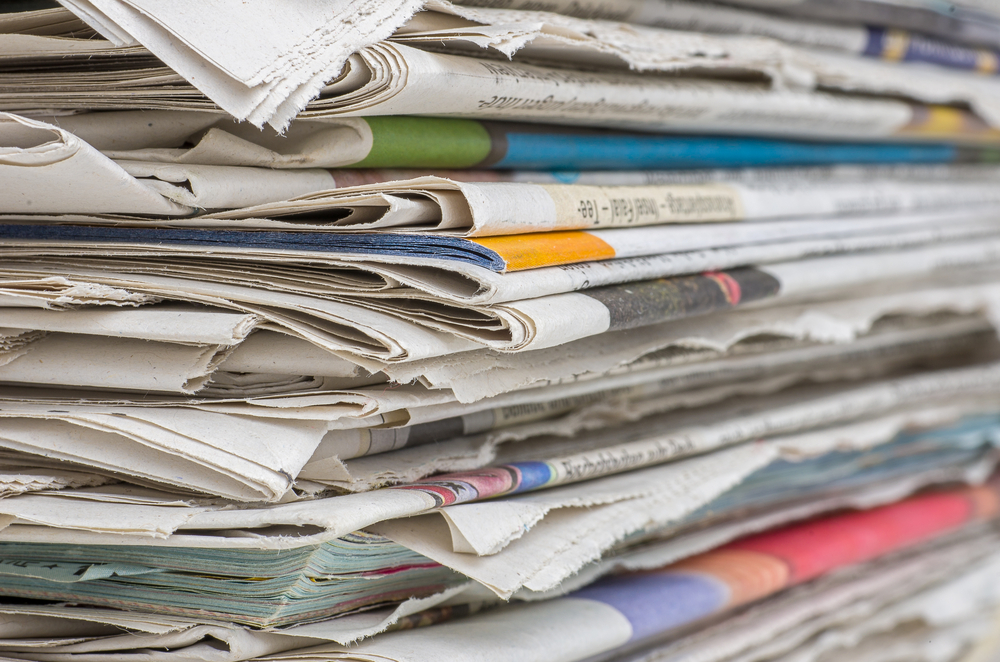Send your question to Umbra!
Q. I’ve heard that paper can only be recycled 7 times before the fibers get too short to make new paper. If everyone recycled all their paper, and purchased recycled-content paper, is there a limit to how much recycled content the average paper could have?
Alex D.
Somerville, MA
A. Dearest Alex,
Nick and Nancy are spearheading a campaign to increase paper recycling in their town to 100 percent. If X people recycle Y tons of paper per month, and total paper demand in town is Z tons, then — wait, are you my eighth grade math teacher?
This delightfully knotty word problem is based on your correct assumption, Alex: Paper can indeed be recycled only a finite number of times before its fibers get too short and frayed to be recovered. And according to the EPA, that magic number is about five to seven trips through the paper mill. That means we must always turn to some amount of brand-new pulp — called virgin pulp in the biz — to fulfill our needs. According to estimates from a nonprofit and a paper industry group, if we tried to make all paper from 100-percent recycled content starting now, we’d run out of materials in just a few months. In other words, yes, there is a limit to how much recycled content the average paper can have.
Oh, you were looking for a number in that answer? That gets tricky. One would need to know worldwide demand for paper, which is rising; the total amount of paper that gets recycled vs. landfilled, which varies considerably by country; the breakdown of intended uses for those paper products (notebooks? Tissue paper? Cereal boxes?), which have different requirements for fiber length; and a slew of other variables that make me a bit dizzy.
So, while I can’t provide a definitive answer, I can share some knowledge on how to maximize the recycled content across our paper supply. The first step is always — all together now — to use less paper overall. Then, we can increase our paper recycling rates and more strategically recycle the types of paper we recover. And finally, we can demand and buy paper products with the highest recycled content possible.
Now is a good time to point out that “recycled paper” can mean two different things. Post-consumer recycled paper, or the stuff that comes from our recycling bins after serving its purpose, is the more desirable of the two: It diverts paper from landfills, saves trees and energy, and pollutes less. Pre-consumer recycled paper, on the other hand, comes from the leftovers of the lumber industry — great not to waste it, but it doesn’t really protect our forests. You can find plenty of 100-percent post-consumer paper products (and a peck of pickled peppers) on the market, including office paper, TP, and paper towels.
Back to our plan to wring every last drop of use out of paper fibers. The U.S. is doing OK on this front, as we give new life to 65 percent of our total paper waste. This recycling rate varies for different types of paper, though. About 75 percent of some lower-quality, shorter-fiber papers, like newsprint and cardboard, are recycled, while only about half of the nation’s higher-quality, longer-fiber office paper enjoys the same fate. The other 50 percent heads straight to landfills or incinerators.
America, we can do better. Short-fiber papers can usually only be recycled three or four times, and only into similar-quality products like newsprint, corrugated cardboard, and notebook backers. Shiny new printing paper, however, can make it seven or more times through the recycling process, and can be remade into more printing paper as well as the lower-end stuff. So the best, longest-lived papers are among the least recycled – talk about a missed opportunity.
I’ll bet you already recycle your personal papers diligently, Alex, so what’s key is spreading the word to others. Especially others who use a lot of office paper. If you don’t already have a successful recycling program at work or school, I urge you to start one. Likewise, switch your office supplies over to recycled paper, preferably of the Forest Stewardship Council-certified variety. As I always say, fiber is a terrible thing to waste.
Pulpily,
Umbra



